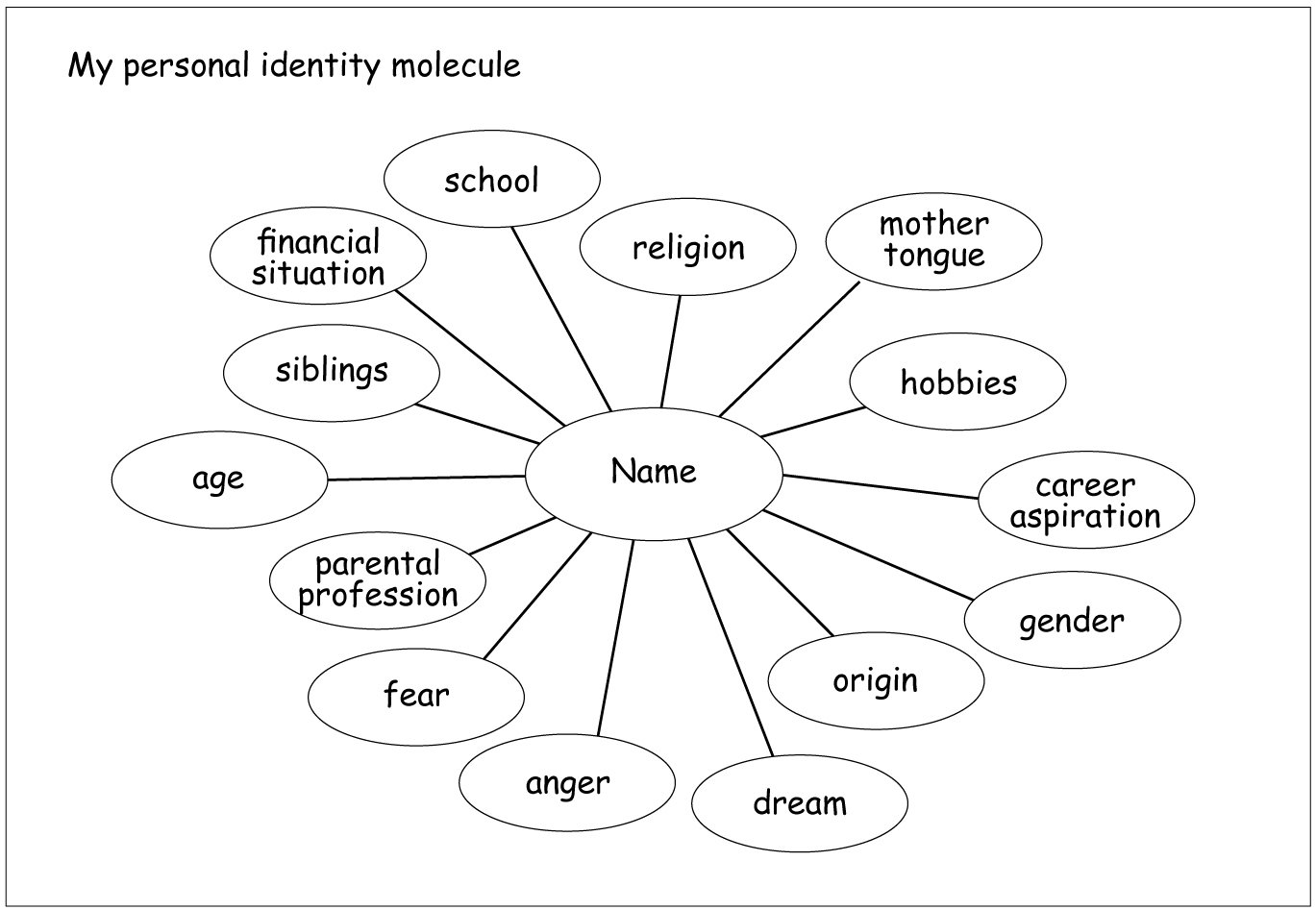Hints:
Source: “A World of Difference”; Institute Training Manual, ©1994
Anti-Defamation League.
Procedure:
- The students receive a worksheet “My personal identity molecule” to comprehend what is at issue. In a short class discussion, they then reflect on the various groups to which they feel affiliated.
- After writing their names in the central circle, they then write in the surrounding circles the names of the different groupings to which they feel affiliated (family, school, spare time, relatives in the country of origin, chat groups, facebook friends, etc.).
- In a second step, the instructor conducts a “stand-up” exercise, in order to visualize group affiliations. S/he calls out various possible groupings (“football club”, “relatives in country of origin” etc.). The students who listed these groupings stand up and maybe give a short commentary. Subsequently, categories are discussed which were not called out, but are listed on the worksheet.
- In a third step, the students form teams of two (preferably involving someone with whom they generally have little contact). Each team discusses which groupings and affiliations have had a particular influence on them, what kinds of influences various persons, personal, political or social events have had (and how different living environments (family, spare time, national culture and traditions) have shaped their character. What is the particular significance and importance of being a member of this group, what makes it easy or difficult to be a member of this group? The prompts for the discussion in pairs should previously be explained.
- To conclude the sequence, the whole class engages in reflections to prompts such as:
- What are the most important points that you discussed in your teams of two?
- Did students find out something new or surprising about themselves?
- Did someone notice something interesting (e. g. gender-specific or age-specific behavior) during the stand-up exercise or in the discussion in pairs?
- Which group affiliations can be experienced as problematic and painful?
- In your opinion, which group affiliations are recognized by society, which ones are not?
- In oder to address the last question mentioned, it is useful to first discuss various social group affiliations (rich – poor; foreigners – citizens; woman – man; christians – muslims; heterosexuals -homosexuals, etc.). The social advantages and disadvantages of belonging to these groups and their acceptance can then be discussed and maybe illustrated with a scale.







